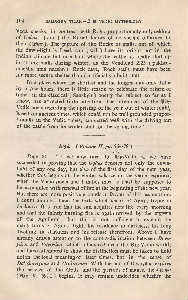Page 758 - Lokmanya Tilak Samagra (khand 2)
P. 758
104 SAMAGRA TILAK - 2 • VEDIC MYTHOLOGY
Veda speaks, in contrast with ~ V., proportionally only seldom
of U~has; (and) the Ritual knows of no special offerings to
the ( U ~has). The· picture of the Rocks or stalls, out of which
the dawn-light is freed, can (will) have its origin not in· the
Indian climate but in a land where the cattle is really shut up
in strong stalls during winter, as the Vendidad 2.23 ( pakhru-
mae~hn uma naeshn ). Rock cave, Rock stalls must have been
far more secure shelter than ( artificially ) built stall.
In a place where the shortest and the longest day only differ
by a few hours, there is little reason to celebrate the return of
light :in the classical ( Sansk~it) poetry the subject, so far as I
know, has attracted little attention. The utterances of the ~ig
Vedic poets regarding the uprising of the year out of winter night,
based on ancient times, which could not be well grounded propor-
tionally in the Vedic times, compared well with the driving out
of the cattle from its winter stall for the spring time.'
Agni. (Volume II,pp. 56-178)
¥ •
Page 81 -'If we now turn to ~ig-Veda :if we have
succeeded in proving that the U ~has denotes not only the dawn-
light of any one day, but also of the first day of the new year,
whether this begins at the winter solstice or the vernal equinox,
when the Vedic poets and families must at least be supposed to
be acquainted with renewal of fire at the beginning of the new year.
But there are more positive grounds in favour of this assumption.
I count amongst them the texts which speak of Agni's living in
darkness. rt is true that the sun acquires new life every morning
and that the faintly burning fire is again revived by the ~IIJ
of the Agnihotri; but this is not sufficient to explain the
many turns of Agni's flight, his residence in darkness, his long
dwelling in darkness and his release therefrom. Above I have
already drawn attention to the contra-distinction between Deva-
yana and Pitriyana, which influenced even the ~ig-Vedic world;
and have attempted to show the distinction must be taken to hold
not in the local meaning of later times, but in the sense of
Dak~hi'l}riyana and Uttaraya'f}Q. With the end of Devayana expires
the service of the Gods and the periods of manes, the ~:
( ~ig. VI. 59. 1) begins. It may remain undecided whether the

